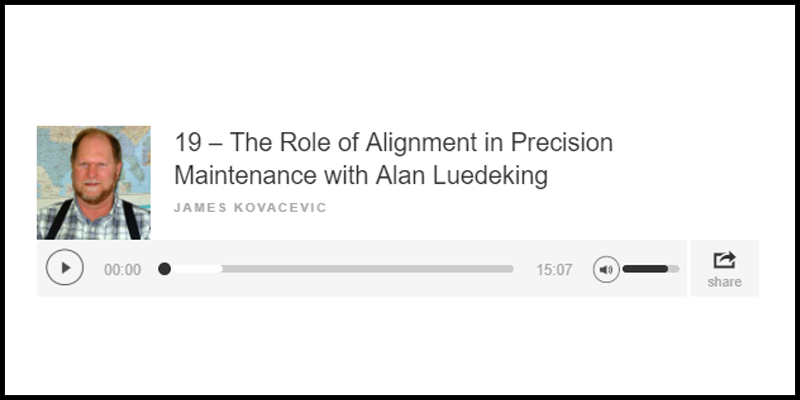
Listen to latest Rooted in Reliability podcast on “The Role of Alignment in Precision Maintenance”
The Rooted in Reliability podcast is a weekly Maintenance and Reliability podcast covering common industry challenges and what you can learn from them. Each episode dives deeper into critical issues and explains who you can begin correcting theses maintenance flaws today. Sharing new tips and techniques to help you achieve industry best practice and shining a light on widely debated maintenance topics with special guest experts.
In the most recent episode, host James Kovacevic interviews Alan Luedeking, CMRP, CRL, Executive Vice President of Ludeca, Inc. in Doral, FL. Alan has 30+ years experience in machinery shaft alignment and training and holds an ISO level I Vibration Analyst certificate as well as a Level I Ultrasound Inspection certificate. The topic of discussion is alignment and precision maintenance. Below is an excerpt of James’ post:
The first thing that pops up into the mind is where to start with the precision maintenance. The first step can be keeping all of your equipment aligned because that really helps to avoid common problems in equipment. The alignment saves you a lot of money, increases the productivity, and efficiency. After this, we can start monitoring activities all along the way.
There has been a lot of improvement because of the laser shaft alignment and laser geometric alignment systems. They help you to identify the failures in your machinery and eliminate them easily. That’s why it is always critical to make necessary alignment activities to keep your equipment working stably and consistently with accuracy, less effort, and less training. We can also use straight edge method for rough coupling and alignment or otherwise reverse indicator method which is sometimes affected by obstacles like vibration effects can be used when the technician is experienced enough to know exactly what he is doing for accurate results. However, these methods are not as efficient and accurate as the use of the laser is.
The major types of misalignment are the offset and angular misalignment. The laser alignment is definitely faster and cost-effective but the use of this technique needs some training for good outcomes. There are a couple of very common phenomenon that occur while working in the workshops, they are…
You can read the rest of Mr. Kovacevic’s blog post here.
Listen to the new podcast here:


0 comments
Write a comment